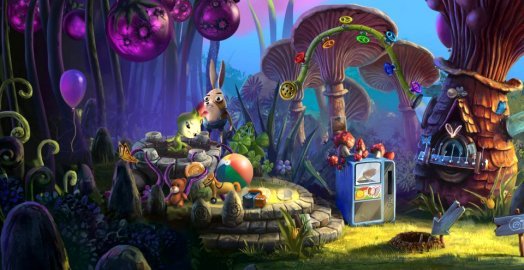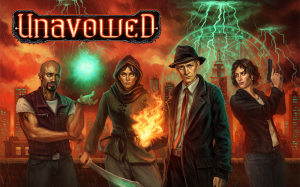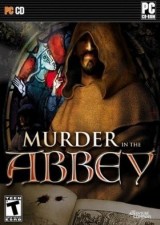Review for My Brother Rabbit

The word “casual” has become a divisive label in gaming circles. Despite the incredible popularity of so-called casual games, they’re often treated with disdain by more hardcore players. The term “hidden object” is downright anathema to many. I’ve personally enjoyed plenty of casual games over the years, though the relentless sameness of them has left me rather disillusioned of late, so it was with some trepidation that I started playing My Brother Rabbit. Created by Artifex Mundi, one of the preeminent producers of seek-and-find hybrids, this gorgeous-looking game promised to be something different from the norm, and it turns out this is true. Is it casual? Is it a hidden object adventure? And is it any good? The answer to all three is a little yes and no, and your appreciation of the experience will hinge largely on your tolerance for “lite” adventuring gameplay.
Split into five distinct chapters with roughly 5-7 scenes each, My Brother Rabbit is set in a vivid, rainbow-coloured world created entirely from a child’s imagination. It’s a lovely hand-painted aesthetic filled with giant mushrooms, floating islands and sunken submarines. Everywhere you look are fun little background touches, from bugs roasting hot dogs on a stick and penguins sleeping in freezers, to mechanical moose on railroad tracks, winged watering cans slurping from ponds, and disembodied eyeballs popping up in the most unlikely places. You’ll want to stop at each new screen and simply absorb the attention to visual detail, both the artistry and the sheer absurdity of it all.
This delightfully whimsical backdrop, however, belies a very bittersweet story framework providing the impetus for your actions. Between chapters are animated paintings depicting the story of an adorable little girl who falls terribly ill while her family can only look on with concern. Though he can’t help directly, the girl’s younger brother has a stuffed rabbit that he believes can cheer her up and ultimately assist in ushering her back to health. In the fantasy world born out of this desire, his wish takes on literal form, as a little rabbit becomes the protagonist who must get a precious but ailing flower creature to a far-off mountain in the distance to recover. Suddenly, the various beakers adorning the landscape in one level and melted clocks in another take on a whole new meaning, symbolizing a young child in hospital whose time may be running out. There are no words spoken at all, and only minimal interaction between the two central characters throughout, but this premise grounds the many fanciful eccentricities with a very effective, emotionally poignant real-world motivation.
The music in My Brother Rabbit also has a slightly melancholy tone. It’s by no means heavy or depressing – indeed, it generally provides a cheerful enough accompaniment befitting these strange environs. And yet the largely keyboard- and accordion-driven score is subdued enough to suggest a wistfulness lingering just below the surface, except when constructing large contraptions out of mismatched parts, which is backed by a bombastic industrial score for added emphasis. The rest of the ambient effects, like ocean waves and playful birds, sound entirely realistic even for such a surreal place.
It’s a good thing this world is so picturesque, because you’ll be scouring it very carefully. Where most adventure games task you with finding inventory items, here you’ll constantly be searching for multiples of various objects, including feathers, pearls, balloons, butterflies, and other assorted gadgets. There’s no reason for needing so many of each, nor much attempt made to justify it at all, though occasionally it’ll make some sense in context: click on a beehive to learn you’ll need to collect a handful of flowers, while a machine will need several gears to operate correctly. You’ll just have to roll with the arbitrary requirement; this is the most casual part of the game.
Icons in the top right show which items you’re looking for, as well as how many you currently have and need. More importantly, the shading indicates whether the current screen contains one. While this is obviously useful, it ends up not being quite as helpful as it sounds. Some objects are “hidden” in plain sight, while others are tucked away in cupboards and closets and other compartments, invisible to you at first. Occasionally a bit of inventory-style interaction is used to access these, but you’ll only ever use tools on the same screen to accomplish a particular task, such as a pickaxe or wood lathe. Eventually you may find that you can see the last stubborn item you need, just not be able to acquire it until you finish other objectives first. This gives the game a kind of cascading linearity that only really breaks when nearing the end of each stage.
Many obstacles come in the form of puzzles. Collect X number of tumblers and you can complete a combination lock – though only by discovering the correct sequence in a clue found elsewhere. Gather enough wind-up keys and you can activate toy mice by rotating the mechanism housing them correctly. The list of puzzles is a veritable who’s who of traditional minigames: sliders, gears, jigsaws, pipes, Simon patterns, pair-matching, and more. Name your favourite – or least favourite – twiddleware puzzle and you’ll probably find it here. No points for creativity, then, but they’re all stylishly presented and rarely repeated so that they’re never more than a passing diversion for a little variety. My preferred puzzles were the few that were cleverly integrated into the environments themselves, like having to manipulate some fluff creatures on paper airplanes riding a wind draft.
Those accustomed to casual games are surely thinking that any items they can’t find or tasks they don’t like are just a hint button or puzzle skip away, right? Wrong! My Brother Rabbit may be casual in nature, but it’s not necessarily easy. The interface is standard first-person slideshow, but here even hotspots aren’t indicated so you’ll need to experiment to see what’s interactive. The object icons may tell you what screen to focus your attention on, but there’s no hotspot highlighter or hint feature available. Ditto the standalone puzzles. Having trouble making tangram pieces fit, balancing weights, or aligning domino beetles, particularly with only cryptic pictogram instructions to guide you? Tough! If you’re stuck, you’re on your own. There’s nothing so challenging that a little logic, perseverance, and sometimes dumb luck can’t cure, but you’re going to have to make the effort. I’ll admit that I got hung up in a couple places by missing a subtle detail that felt a little cheap, but for the most part I made steady progress.
Even without the typical aids, this isn’t a long game, taking no more than three hours to complete. A few extra achievements invite you to click anything and everything to see what might happen, but ultimately they have no impact on the experience. Object placement isn’t randomized either, so there’s really no incentive to return for a replay, though you can go back to any individual chapter after completing the game. Perhaps it’s a good thing it doesn’t overstay its welcome, given the relatively straightforward gameplay involved, but I’d have gladly tackled a few more levels even with more of the same. Apart from a few bottleneck frustrations, poking around these gorgeous, zany environments keeps the fun factor fairly high, and my attention never wavered throughout.
So is My Brother Rabbit a casual game? It’s a glorified scavenger hunt interspersed with familiar puzzle types, so by nature it categorically is, and yet the lower degree of hand-holding means this isn’t a game you can simply switch your brain off to play. Is it a hidden object game? I guess that depends on your definition of “hidden” when searching for items is no different than prowling for regular inventory – there’s just a whole lot more of them to find. Think of it like a more child-like version of Samorost instead; the closest comparison is probably The Tiny Bang Story rather than the zillion-and-one junkpile HOGs on the market today. So is it any good? I generally enjoyed my time playing, even if it is a bit of a one-trick bunny. For those who despise story-lite, puzzle-heavy adventures, there’s probably not enough here to make you change your mind. Just don’t dismiss it as your everyday casual clone, because it definitely has a style all its own. For everyone else, this is a beautiful, sweetly sentimental little game that makes for a charming time on a rainy afternoon to help chase the blues away.
WHERE CAN I DOWNLOAD My Brother Rabbit
My Brother Rabbit is available at:
We get a small commission from any game you buy through these links (except Steam).Our Verdict:
A different kind of casual game from the norm, My Brother Rabbit is a charming, beautiful fantasy adventure whose scavenger hunting gameplay successfully dangles the proverbial carrot on a stick for the short time it lasts.



























